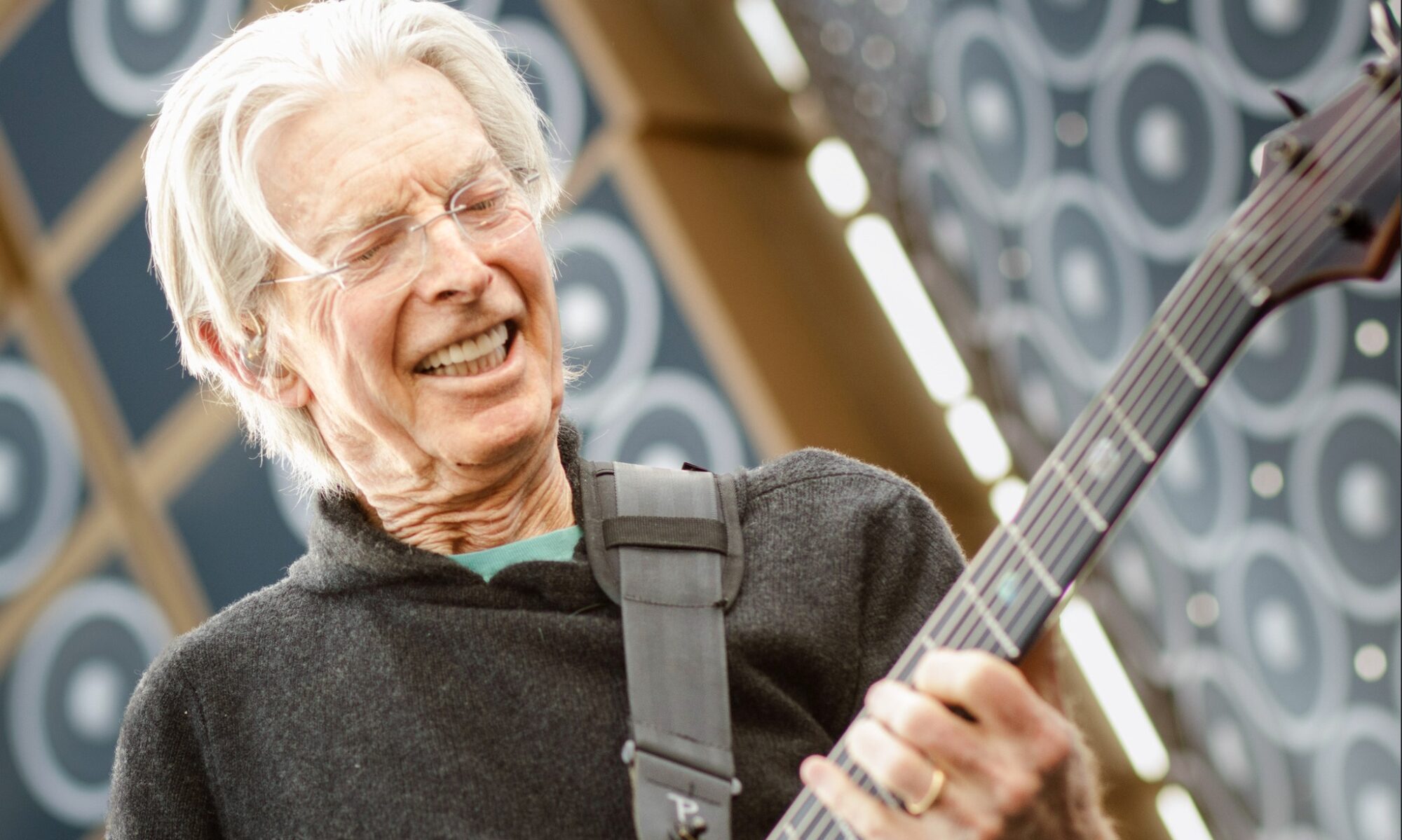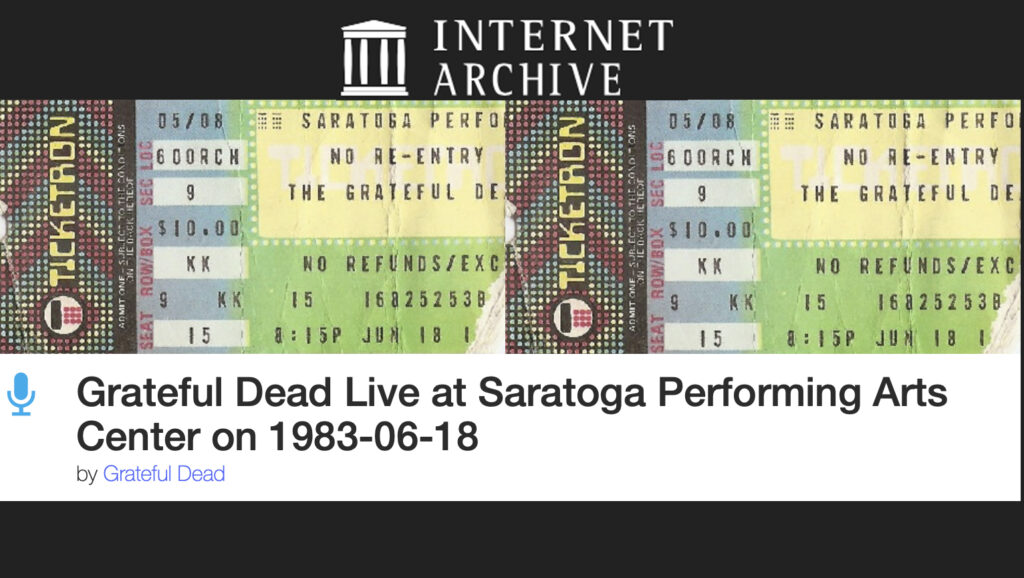Originally published in Ruta 66 Magazine in Spanish.

January 3, 2025
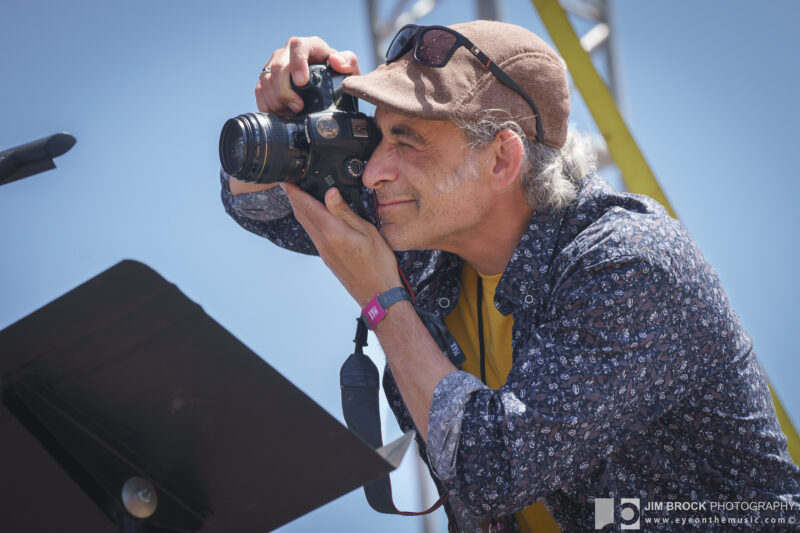
In the current issue (Elvis on the cover) we have dedicated an extensive article on the Grateful Dead. This interview was left out due to lack of space. So we are presenting it here as a “bonus track”. Hal Masonberg, photographer, filmmaker and occasional writer, saw the Grateful Dead 140 times and Jerry Garcia about 70 times with his band, the Jerry Garcia Band. With his history, it was easy to foresee that Hal would have some interesting stories.
Hal has lived in Barcelona for 3 years because “I came to Barcelona to take photos for the Barcelona Jazz Festival back in 2021. I was here for about 3 months and just fell in love with Barcelona and Catalan culture and the jazz scene here. I had lived in Sweden and always wanted to move back to Europe. I never much liked Los Angeles, where I’d been living for 30 years, and I was not ideologically and ethically in sync with the U.S. politically, and I really loved the sense of community that I immediately felt here in Catalunya. So I went back to the States, sold everything, and moved to Barcelona. One of the best decisions I ever made.” Hal is still one of the official photographers for the city’s Jazz Festival. So if you see him in the front rows of the festival, say hello from us.
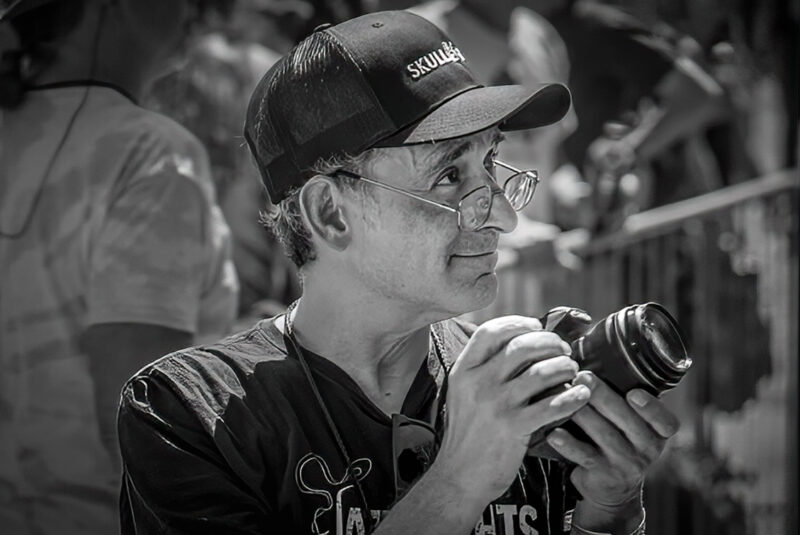
In your blog, you introduce yourself as Photographer, filmmaker… Lots of things, being a Dead head one of them. I mean, other people would say music lover, you said “Dead Head”. What is the meaning of this for a person who doesn’t even know who The Grateful Dead are?
Well, the Grateful Dead are a kind of an acquired taste and a rather unique experience. Unlike a lot of other bands, they were far more known for their live music than their studio albums. They had very few radio “hits” and therefore their audience was largely built either by those who went to see them live or those who had friends or relatives who would share live “bootlegs” of their concerts. The Grateful Dead, unlike most other bands, actually allowed and even promoted live audience recordings of their concerts. THIS was how they found their base.
The Grateful Dead were largely an improvisational band, inspired by a jazz approach to music-making. They were intrepid explorers who took creative risks on stage. They never played the same song exactly the same way twice. And they never played the same show twice. Each night was its own unique experience never to be repeated. You either caught that show, or you missed a once-in-a-lifetime-experience. The band played without pre-determined setlists so both the songs played, the order they were played in, and the energy and approach was dictated by environment and setting. The mood of the musicians, the venue, the weather, the audience, the alignment of the stars… They were a band both reaching and channeling. The energy they created could be as quiet as a mouse or as loud as the most earth-shaking thunderclap. It was also the musical spaces created between songs, the jams that worked as unique bridges between tunes, that oftentimes offered the most daring and musically ecstatic moments of any given show.
The Grateful Dead also explored multiple musical genres ranging from rock to folk to jazz to bluegrass to sea shanties to traditionals to even disco and beyond. They became known for their own unique brand of “Americana.” Today, Grateful Dead music is largely considered its own genre. The end result is that those who “got” the Dead, those who understood and were deeply moved by what this band was doing, became a community unto itself. Thousands followed the band around the country – around the globe – in an effort to not only see and experience as many shows as possible, but to connect and reconnect with like-minded individuals who all shared a sense of adventurism and were open to improvisational moments, not only in music, but in life. This created a shorthand. It was a place where being unique or unusual was a strength, not a weakness. It was a traveling island of misfits by any “normal” societal standards, though it attracted people from every walk of life from doctors and lawyers to artists and those who lived more transient lives.
Grateful Dead is the kind of music that may not immediately reveal its secrets and treasures upon first listen, but could, like a light switch, suddenly be turned on and once that occurred, there was no turning back. What was heard and understood could never again be unheard. It was a like a door opening that you didn’t even know was there, that you didn’t even know existed, and once you entered, the expanse of the universe itself – both internal and external – became your playground. It can be such a profound and life-changing experience that to connect with others on that same path, that same wavelength, offered a certain kind of safety, an optimism of community and even ancient, primal ritual. It was an unspoken understanding that required no explanation between those who were drawn to it. Despite any differences one might have, this was a deep, connecting thread between individuals and groups.
Were they an influence in all the things you are in this life? Again: photographer, filmmaker, screenwriter, video director…
The Grateful Dead changed my life. I know that sounds hyperbolic or like a strong thing to say, but it’s true. They effected me deeply and continue to on multiple levels. In the most basic terms, in my youth, it showed me that I was not alone in the world, that there were others who shared some of my values and perspectives, but who also didn’t necessarily fit snugly into societal norms or expectations. It also offered me a kind of spiritual experience that transcended anything else I’ve known. Not spiritual for me in a religious or dogmatic sense, but in connecting with something indescribable and ecstatic. To this day, listening to live Grateful Dead offers me real balance in my life. For all the struggles I may engage in and with in my life, I come back to the emotional and spiritual reminder that human beings can create something not only beautiful, but in many ways beyond comprehension. It can bring the largest grin to my face in mere seconds and fill me with an optimism and elation that very few other things can. Many of my nights are spent listening to a live Dead show on my headphones while I walk on the beach here in Spain where I live. I maybe smoke a little pot and allow myself to become fully immersed in this winding musical journey. It is literally one of my favorite things to do. I’m 61 years old and I’m not even close to being tired of it. Quite the contrary.
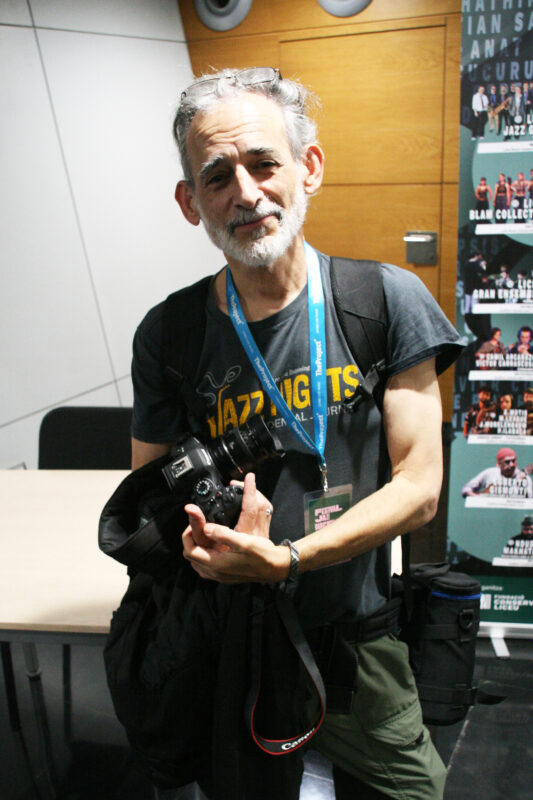
How did you discover them and when was the first time you saw them?
I had an older cousin who was really into the Grateful Dead for about five minutes, It was a short phase in her life, but it acted as an introduction for me. She moved on to other things, but I stayed deeply embedded and forever changed by the experience. She unwittingly opened a door for me. I started listening to the Grateful Dead around 1975 when I was 12. First came the album Europe ’72 which introduced me to the live version of their music, and then came Blues For Allah which introduced me to a studio take. They were wildly different in so many ways. Even the genres themselves seemed miles apart, though clearly this was still the same band. Unfortunately, I didn’t get to see them live myself until September 1979 in New York. I missed what still remains my favorite era for the band which was the mid-70’s with Keith and Donna. But that first show was mind-blowing and absolutely lived up to the then-common phrase “There’s nothing like a Grateful Dead concert” or, as concert promoter Bill Graham said, “They aren’t the best at what they do, they are the only ones that do what they do.” That remains true for me to this day, and I have seen thousands of live concerts throughout my life. I’m a music photographer. I see live music almost every night.
As I mentioned above, the Grateful Dead – like many jazz artists – never played the same show twice. Everything about the experience from one night to the next could be wildly different. And each tour, each year had its own sound, its own unique qualities that distinguished them. I love a lot of other music and a lot of other acts, but nothing – and I mean nothing – comes close to a live Grateful Dead experience. Now that doesn’t mean every show or even every tour was good. Quite the contrary. That was part of the deal. You may have to sit through a show that might have musically been somewhat of a train wreck due to the fact that these were musicians really pushing themselves, really taking musical and creative risks. And what that means is sometimes you reach for something and you don’t get it. Sometimes that creates another equally transcendent moment, or it completely falls apart. But we all knew that those moments were necessary if they were also going to attain those moments of immense perfection and create that indescribable but nonetheless wholly tangible “energy bubble” that could leave an audience of thousands in a state of pure ecstasy and elation. Most other bands either play the same show each night or make some subtle changes, but do not deviate dramatically from one night to the next. Every time the Grateful Dead took the stage, the doors of possibility swung wide open.
You saw them 140 times, another 70 with Jerry Garcia solo. Would you be able to choose 3 favorite concerts?
It’s always hard to pick favorite shows. There is so much that goes into making a show memorable. In addition to the music, there are favourite venues, favourite cities, who you were with, how much room there was to dance, etc. One of my personal favorite shows was in Augusta, Maine on October 12, 1984. It was the perfect convergence of everything and the band was simply on fire. Another was Saratoga, New York on June 18, 1983. This was a show where they had a new sound system that was wreaking havoc and the music was imperfect and even at times completely fell apart. I mean total train wrecks. At the same time, the energy was immense. The setting was otherworldly and the band played a really long show as if they never wanted to get off the stage. It’s not a show I would recommend to the uninitiated because it really is a total mess at times. But in the moments when they hit the nail on the head, it’s explosive. And one of the best Morning Dews I ever saw.
My favorite Dead shows are, of course, many of the ones I never saw live. Like I mentioned above, the mid-70’s were the heyday for me. 1974 is probably my favorite year for the band. Thankfully, the Dead were great at ensuring that there were quality audio recordings of almost every show and now they get released regularly, as well as places like the Internet Archive where you can access multiple audio versions of almost any Grateful Dead show from the over 3000 they performed.
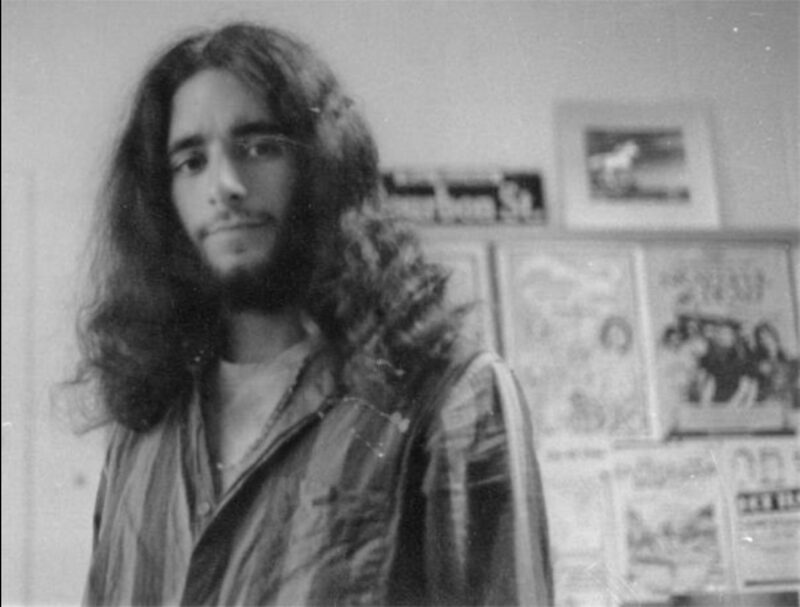
I remember photographer Neal Preston declaring that they was the worst band to be photographed. Were you able to take professional photos of the Dead? Were they exciting in front of the lens or do we have to take those statements from Preston seriously?
I didn’t get to photograph the Grateful Dead. At least not professionally. I wasn’t doing music photography at that time. I was too busy dancing. 🙂 That said, however, I have photographed many of the band members in many of their post-Dead incarnations. I was one of the head photographers for the Skull & Roses Festival – a festival dedicated to the music of the Grateful Dead – as well as having been the photographer for Jerry’s Middle Finger, a band devoted to the musical experience of the Jerry Garcia Band. I think of myself as a live music photographer of jazz musicians and the Grateful Dead scene. Those are my happy places.
As for the Grateful Dead being photogenic, that all depends on what you are trying to capture. I am personally drawn to moments of intimacy and the inner journey taking place so, for me, the Grateful Dead as a band would have been a pure joy to photograph.
How was your personal meeting with Jerry in 1984?
I didn’t have a personal relationship with anyone in the band. I met them all briefly at one point or another over the years, but never in an intimate or personalised setting. I never got to know any of them.
I met Garcia, however, in spring 1984 in Providence, Rhode Island. The circumstances were a bit odd. Let’s just say Garcia and I had a business exchange through an intermediate and one night I went to thank Garcia in person. We met in his hotel room. It was a simple, relatively quick exchange. I was a kid in my early 20’s, I’d never really met any of my “heroes” at that point in my life so I was pretty nervous. I laugh about it a lot now when I look back. I was so innocent. Garcia was sweet and kind and generous and made me feel very welcomed. That was the only time I met him.
This year marks the 50th anniversary of Blues For Allah. Like mine, it’s your personal favourite studio album of the band. Why?
The music in Blues For Allah is unlike anything else the Grateful Dead ever played or created. I actually didn’t know what to make of it when I first heard the album, but it quickly became my favorite. In addition to being what I considered just one of the best- mixed studio albums, it was also music that was created at their peak. Or what I consider their peak. I mentioned above that 1974 was my favorite year. Allah was recorded and released in 1975. It’s a direct product of that era of immense creativity and exploration.
After the death of Jerry Garcia, the rest of the band got together in different projects, always assimilating, but the Grateful Dead, as such, did not exist, but always making direct reference to the band. Have you followed any of these groups?
I’ve seen all the post-Grateful Dead, post-Jerry incarnations of the band. The only one that REALLY worked for me was Furthur. I absolutely loved that band. I thought they were explorative and daring in ways none of the other incarnations quite managed. I also really loved all the different combinations of Phil Lesh’s bands, Phil & Friends, the Terrapin Family Band… For me, Phil was the one who seemed to always push the boundaries of what could be done. He seemed to really understand the potential that was always there. And he wanted to play songs that the rest of the band members just didn’t seem as interested in exploring when they weren’t performing with Phil.
For me, without Jerry Garcia, there is no Grateful Dead. The Grateful Dead existed because of the core combination of musicians. The core four, as some say: Garcia, Weir, Lesh and Kreutzmann. Which isn’t to say the other members didn’t have impact. They did. The sound changed rather dramatically with the addition or loss of any given member. But the Grateful Dead required the core four. Anything else is a different experience entirely.
I really appreciate that a band like Dead & Company have brought these songs to a new generation of fans as well as continuing to create a space and environment for the older, committed fans. That said, Dead & Company never really moved me. I saw them a lot and photographed them multiple times, but it was a very different experience for me than what the Grateful Dead (or even Furthur) was. It was always nice to hear those songs again played live, but the band itself always felt somewhat constrained to me. The music rarely soared. It almost felt like a form of Grateful Dead-lite to me. I know that sounds like negative criticism, but I think the music Dead & Company makes is perfect for their audience. It’s not the Grateful Dead experience, but it is still a unique and valid experience. And it SHOULD be different. It’s a different band. It should reflect THAT combination of musicians. They just never went to the spaces that most moved and affected me. I mostly walked away just missing the Grateful Dead and Jerry. But again, Bob Weir, to me, is one of the great guitar artists of all time. No one plays rhythm guitar the way he does. The nuance, the beauty… There could no more have been a Grateful Dead without Bob Weir than there could have been without Jerry Garcia. And Bobby is still a stunning musician. It’s in his blood. It’s just the combination of musicians in Dead & Company that don’t quite coalesce for me, as individually talented as they all are.
For me, there are many other bands that come closer to capturing and honouring the energy and explorative, intrepid nature of the Grateful Dead than Dead & Company. I mentioned Jerry’s Middle Finger above. Though they are a band devoted to the music of the Jerry Garcia Band, they have also come closest for me of offering the energy and vibrancy and pure, unadulterated joy and sorrow that Garcia himself achieved. That said, they are also their own band. They’re not Garcia or John Kahn. They are a unique combination of supremely talented musicians who were lucky enough to discover one another and come together as a band. It’s a rare thing, but when it happens, it’s pure fucking magic. JMF is magic. I also really like what Stu Allen has been doing over the years, and Joe Russo’s Almost Dead and, here in Barcelona, Afro Dead.
It’s a total shock to see that the music of the Grateful Dead is more popular now than when the band itself existed. It was a phenomenon then, it’s even more so now. Who would have ever guessed? Certainly not me. Oddly enough, it seems to be a largely American experience. Living here in Spain, it’s a rare occasion if I bump into someone who has even heard of the Grateful Dead or Jerry Garcia, no less knows their music. They know all the other big bands of that era, but not the Dead. Why is that? I truly don’t know. It’s shocking to me as I consider the Grateful Dead’s songbook and legacy to be right up there with the Rolling Stones or The Beatles or Bob Dylan. They’re essential and equally as influential.
Text: Sergio Martos
PS: Many thanks to Roger Mas for the contact and his love for the music of the Dead.
